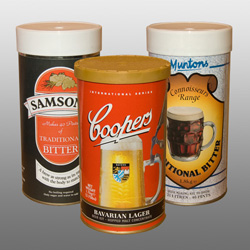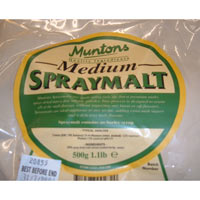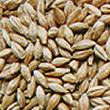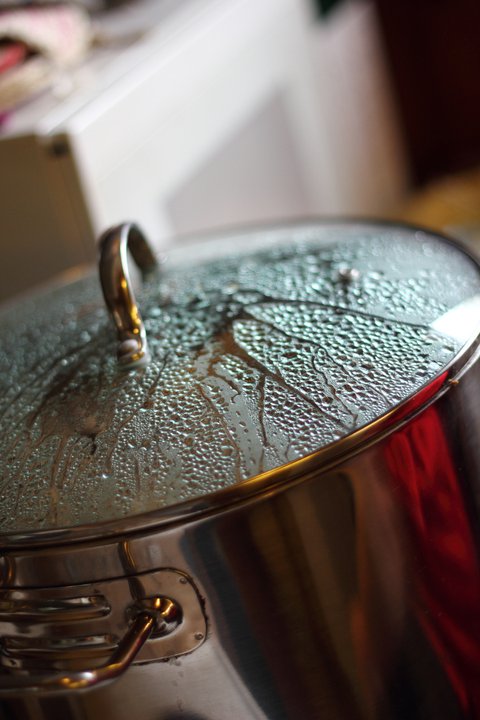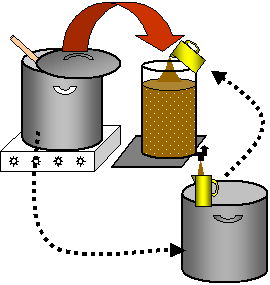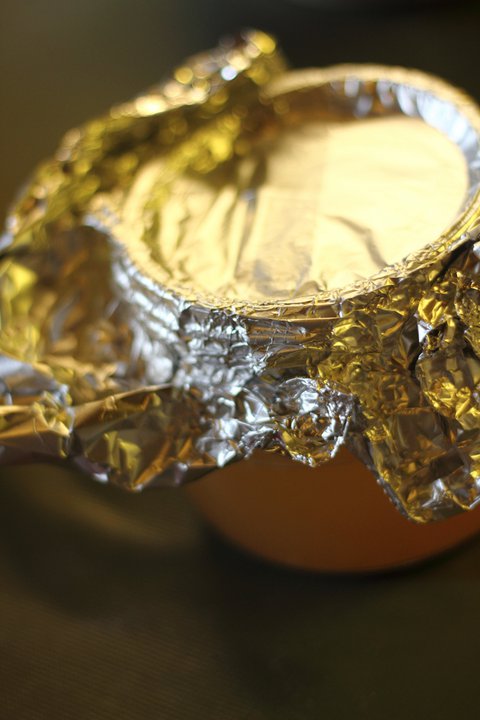Who can make beer?
With my experience I usually say that anyone can make beer, because you can always find a method that anyone can contribute. I usually also say that if you have to enjoy the process and ensure that you make great beer, it’s a great help to you also like to cook.
The reason is very simple: To brew beer recalls having to learn how to make good food again from scratch. One must understand the different ingredients and how they together form the taste.
History and profile
About 5 years ago I was made aware that a colleague self-made beer, so I thought it would be tasted and bought a couple of different. The reader should be aware that I at that time had not moved me out of taste all the wonderful beers can be found everywhere today. Back then bought a Grolsh or Corona if it should be fine.
When I finally sat down to taste his beer, I was so much surprised at how good it tasted. I remember I thought “WOW! Can you make something yourself that tastes SO good?!?!”
Shortly after I began researching what is to be purchased equipment and get me an overview of how to do.
3 options
In broad terms, you can choose between 3 different methods when it comes to brewing beer, but to understand how they differ one must first understand the rough outline of the process.
- It should provide flavor and sugars. This is done with malt (usually barley)
- You have to create a balance between sweet and bitter and give brewed hop flavor / fragrance
- Brewed to ferment
The various methods described below have 1 thing in common – fermentation are the same no matter which method you use, so we only look at how they differ in section 1 and 2
Shake’n’brew (Brew Kit)
This method takes a short time and is a bit like buying a recipe for Marizina cake and it is just as easy.
It tastes fine but does not give any opportunity to put together a recipe. Pt 1 & 2 are combined in one.
Extrakt brew
Here one obtains section 1 using extract and you can choose from several different kinds. Briefly, to cook the quantity of water along with ektrakten then boil the hops to create bitterness and hop flavor / aroma. Here one can affect the taste more than a Beerkit where everything is predetermined, but is limited in the relatively limited choices there are in the extracts. Typically, there are about 5 different.
Allgrain
It made everything from scratch. Point 1 is obtained by subtracting flavors and sugars out of the malt and then boil the hops. There are virtually endless possibilities for combining different malts, because the choice is so large.
Where to start?
I started even with extract brew because it seemed easy enough to start with and secured any quality. I would even recommend the same to others who will try to brew beer, not least because it requires less equipment and because it is to grasp.
How to brew allgrain?
The process consists of 3 main elements:
- Steeping
- Sparging
- Hops Cooking
Mashing
The aim is to extract as much as possible to flavor and sugars out of the malt. This is called mashing. This is done by taking a quantity of water along with a quantity of malt and let it soak for a while. How much water, malt and time depends on what you brew, but as a rule of thumb I usually keep the temperature at approx. And 63 degrees for 90 minutes.
At higher temperatures generate complex sugars that the yeast can not consume, so you can play with higher temperatures if you want a sweet beer.
The amount of water is calculated by calculating backwards. I will return to this.
Sparging
After mashing to make a sparging / sparging.
After dropping the mask stand for 90min pour it into a container as the bottom has a spigot and a false bottom / s. You can use the same pot for mashing if it already has a spigot & si.
The first step is to remove impurities in the bottom of the pan in front of the valve. This is done by opening the valve completely and pick up the mash that comes out in a container which is then poured back into the top. This is done several times until the content that comes out is more clear. See the picture below.
This will open there is very little on the valve, so it is very quiet drips down into a fermenting tank or other large container.
At the same time overpøses which gently into the pan with approx. 80 degrees hot water. This is known as spawning water.
The aim is to create a layer of clear clean water on top of it that has stood in the pan along with the malt. When the pot quietly emptied, this layer draw the last sugars and flavor out.
See the picture below.
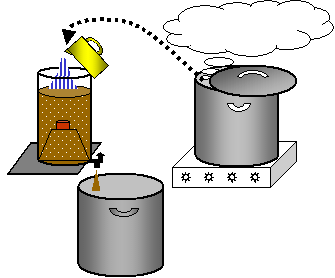
The amount of water to be used is calculated in this way:
Desired final volume = (water added to the pan – kg malt) – bundtab + spawning water.
The reason that one takes into account the malt is the malt will hold approx. L of water per kg.
For our brew the calculation is as follows (using 2 pans for mashing):
To hops boiling desired 24 L herb
Please provide equivalent to 12L in each pot by mashing. Ie 4.5 malt and 7.5 L water (4.5 +7.5 = 12L)
The one pot must be 70 and the second 85 degrees.
There will be (7.5 to 4.5) * 2 of this = 6L. From there, pulled 1L as a loss – ie 5L
Therefore, there is poured in 19L to 24L reach
Hops boiling
When mashing is over, the product is boiled with hops and any spices.
In this process, the product is called “wort” in place of the mash.
Hops have the property that when it is boiled approx. 60min gives the bitterness.
When it boils 20-30min gives the hop flavor.
When it boils approx. 5 min gives the hop aroma.
Therefore shares typically hops into 3 bags depending on the balance you want.
After humlekogningen measured sugar to check if it fits with the recipe.
If it is too high, you can either live with a stronger beer, or infant with water.
If it is too low, one can add malt extract.
Cooling
After hops boiling the wort is cooled down as quickly as possible from here can brewed at risk of being infected with unwanted bacteria, which gives a bad taste. You can optimize by purchasing a so-called chiller, a snoget copper you put to his faucet. This can cool the brew down below 10min, which would otherwise take a night outdoors (depending on season).
Fermentation
When cooling is complete add the yeast and brewed must then ferment.
It is useful to prepare a gærstarter days before the brew. It consists of water, a little sugar and yeast.
By making a gærstarter sure you insure that the yeast has the best chance to ferment the beer.
I leave it usually ferment for approx. 3 weeks with one racking after 2 weeks.
It is ready when it no longer bubbles.
Botteling
After fermentation must be brewed in the bottle so it can mature. Many people ask how to make bubbles. It’s actually very simple. Just before pouring into bottles but add sugar dissolved in water. When brewed as have come bottle will yeast fortærre these sugars, creating bubbles. The reason is that when yeast consumes sugars bothered 2 things. Alcohol and CO2.
I usually use 7-8g sugar liter brew.
Our recipe
Amount/ Ingredients/ Type # % / IBU
6.00 kg Pilsner (2 Row) Bel (3.9 EBC) Grain 1 66.4%
2.00 kg Vienna Malt (6.9 EBC) Grain 2 22.1%
0.50 kg Flaked Oats (4.0 EBC) Grain 3 5.5%
0.10 kg Black Barley (Stout) (985.0 EBC) Grain 4 1.1%
0.08 kg Chocolate Malt (886.5 EBC) Grain 5 0.9%
0.35 kg Honey (2.0 EBC) Sugar 15 3.9%
1.2 pkg Belgian Ale (White Labs # WLP550) [35.00 ml] Yeast 14 –
1.00 Items Anise, Star (Boil 10.0 mins) Spice 12 –
15.00 g Cinnamon Stick (Boil 10.0 mins) Spice 8 –
15.00 g Orange Peel, Sweet (Boil 10.0 mins) Spice 9 –
4.00 g Coriander Seed (Boil 10.0 mins) Spice 11 –
10.00 Items Cloves (Boil 10.0 mins) Spice 10 –
15.00 g Cascade [5.20%] – Boil 15.0 min Hop 7 3.9 IBUS
6.00 g Cascade [5.20%] – Boil 5.0 min Hop 13 0.6 IBUS
30.00 g Cascade [5.20%] – Boil 45.0 min Hop 6 14.5 IBUS
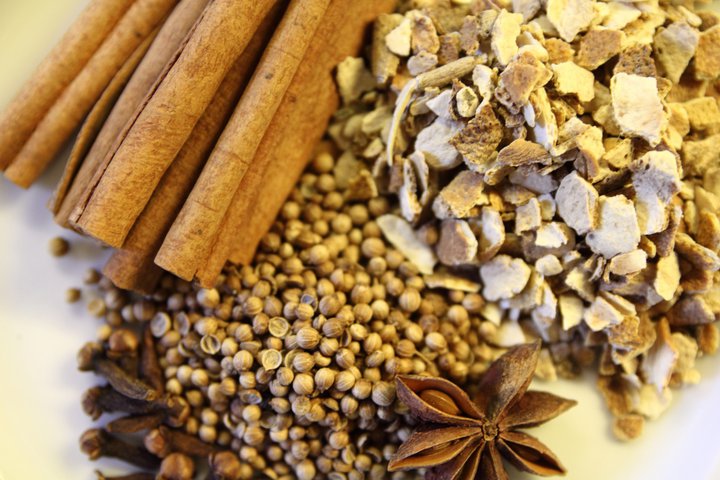
We chose the one pot during the mashing process should be 63 degrees and the other 80 degrees, in order to create no sweetness. We chose a Cascade hops and a Belgian ale yeast.
Mashing was performed with quantities and procedure as described above, with the use of a home-made spawning tank above a pan of the valve and filter.
Put together a recipe yourself
You make a beer in the same way as you would typically make a good meal. You start with an existing upshift and build on it.
The trick is to create a balance, just like cooking.
When you brew beer you must create a balance between the sweetness of the malt and the bitterness of the hops.
You must create a balance between the spices, if you use any.
I started with some simple recipes and build my experience up.
I think that programs that calculate things for one are invaluable, because they can tell you how many bitter entirety coming out of the hops you use and how much malt flavor that comes out of your malt. Without these programs have to guess.
I use BeerSmith, which can be purchased for little money, but can be everything.
You can also find these features online at haandbryg.dk in their Beercalc program.
Conclusion
The first step can be difficult, so start small and become comfortable with such. extract brew, so you know the whole process except for mashing.
Credits
Illustrations are borrowed from www.haandbryg.dk
The pictures I have shot.
The process can also be found on www.haandbryg.dk / columnist / teknisk_om_at_brygge.html

